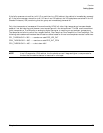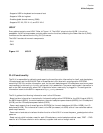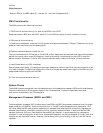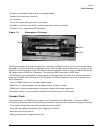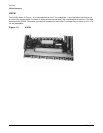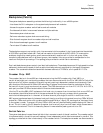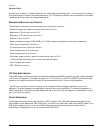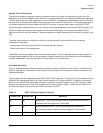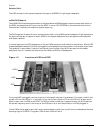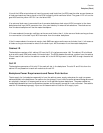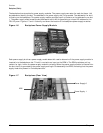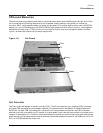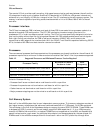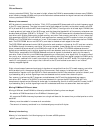
Chapter 1
Overview
Backplane (Fabric)
37
System Clock Distribution
The following system components receive the system clock are the eight cell boards that plug into to the
backplane, the six XBC crossbar switch chips on the system backplane. Two backplane clock power detectors
– one for each 8-way sine clock power splitter are on the RCS. The backplane power detector sits at the end of
the clock tree and measures the amplitude of the clock from the RCS to determine if it is providing a signal of
the correct amplitude to the cell boards and XBCs. Its output is also an alarm signal to the RPM FPGA.
System clocks can originate from four input sources: the single-ended external clock input MCX connector, the
280 MHz margin oscillator on the redundant clock source (RCS) board, or from one of the 266.667 MHz
oscillators on one of the HSO modules. The source selection is determined either by firmware or by logic in the
RCS.
The clock source has alarm signals to indicate the following health status conditions to the cabinet
management subsystem:
- Loss of power and loss of clock for each of the clock oscillator boards
- Loss of clock output to the backplanes
The sx2000 clock system differs from the sx1000 clock system in that the system clocks are only supplied to
the backplane crossbar ASICs and the cell boards. System clocks are not distributed to the I/O backplanes.
Instead, independent local clock distribution is provided on the I/O backplane.
Hot-Swap Oscillator
Two hot-swappable clock oscillators combine the outputs of both oscillators to form an N+1 redundant fault
tolerant clock source. The resultant clock source will drive clocks over connector and cable interfaces to the
system backplanes.
The hot-swap oscillator board contains a 266.667 MHz PECL oscillator. The output from this oscillator drives
a 266.667 MHz band-pass SAW filter that drives a monolithic IC power amplifier. The output of the power
amplifier is a 266.667 sine wave clock that goes to the RCS. The module also has two LEDs that are visible
through the module handle. One LED is green and the other is yellow. Table 1-1 describes the HSO LEDs.
The electrical signal that controls the LEDs is driven by the RCS.
Table 1-1 HSO LED Status Indicator Meaning
Green LED Yellow LED Meaning
on off Module OK – HSO is producing a clock of the correct amplitude and
frequency and is plugged into its connector.
off on Module needs attention – HSO is not producing a clock of the
correct amplitude or frequency and is plugged into its connector.
off off Module power is off.



